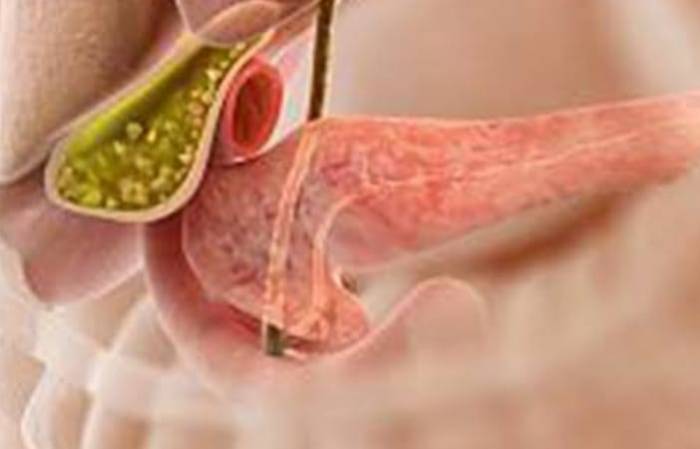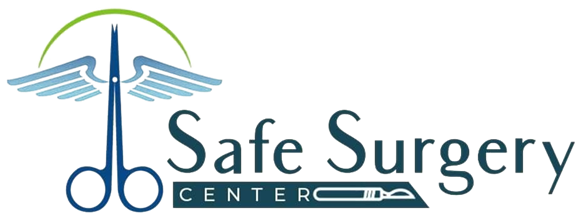
GALL BLADDER STONE SURGERY ( CHOLELITHIASIS ) (CHOLECYSTECTOMY )
CHOLECYSTITIS
Severe pain in the right upper abdomen which may radiate to back.
• Nausea or vomiting
• Abdominal bloating (gas formation)
• Intolerance to fatty foods
• Indigestion
Many patients don’t have symptoms but they can become symptomatic and cause complications Timely management is necessary and very important to prevent complications
WHAT IS GALLBLADDER?
Gallbladder is a small pouch present close to the liver.
Its function is to store and concentrate bile juice which is produced in the liver.
Bile is a juice produced by the liver which helps to digest fat.
WHAT ARE GALLSTONES (CHOLELITHIASIS)?
Stones forming within the gallbladder.
They may vary in number and size.
For management size, shape or number is not relevant.
WHO IS AT RISK FOR GALLSTONES?
• Women more than men.
• People in their 30’s and 40’s.
• Overweight men and women.
• People with rapid/sudden weight loss.
• Pregnant women. Women on prolonged hormone therapy.
WHAT ARE THE SYMPTOMS?
• Severe pain in the right upper abdomen which may radiate to back.
• Nausea or vomiting.
• Abdominal bloating (gas formation).
• Intolerance to fatty foods.
• Indigestion.
Many patients don’t have symptoms but they can become symptomatic and cause complications.
Timely management is necessary.
HOW ARE THE GALLSTONES DIAGNOSED?
• Abdominal Ultrasound.
• Endoscopic Ultrasound.
• Cholescintigraphy (HIDA Scan).
• Endoscopic Retrograde Cholangio Pancreatography (ERCP).
• Magnetic Resonance Cholangio Pancreatography (MRCP).
WHAT IS CHOLECYSTITIS?
Cholecystitis is defined as inflammation of the gall bladder.
Commonly arise when the flow of bile is interrupted either due to stone (90%) or infection of biliary tract.
Symptom:
• Severe abdominal pain.
• Fever and Malaise.
• Nausea and Vomiting.
Diabetic patient may have minimal pain due to neuropathy.
Complications:
Pancreatitis, Gangrene, Empyema, Gall bladder perforation.
WHAT IS GALL BLADDER POLYP AND ADENOMYOMATOSIS?
Cholesterolosis is deposition of cholesterol crystals in the gallbladder wall.
Adenomyomatosis is excessive proliferation of the inner lining of gall bladder; some has risk of gallbladder malignancy.
Gall bladder polyp includes projections of the gallbladder wall into the lumen.
Cholesterolosis and adenomyomatosis are usually silent.
Polyp >10 mm in size or multiple need removal of gall bladder.
BILIARY PANCREATITIS
Defined as swelling of pancreas.
Biliary pancreatitis is a very serious and life threatening condition.
CAUSE
Gallbladder stones migrate into the common bile duct (CBD) and block the pancreatic opening.
WHAT COMPLICATIONS GALL STONES CAN CAUSE?
• Pus formation in the gallbladder (Empyema).
• Jaundice and Cholangitis (life threatening infection of biliary system).
• Gangrene or perforation of the gallbladder.
• Acute pancreatitis which can have a catastrophic sequel of MODS and other serious complications.
• Cancer of gallbladder if left untreated.
GALLBLADDER STONES AND ASSOCIATION WITH GALLBLADDER CANCER
Gall bladder with stones, if left untreated for longer period has higher chances of cancer.
• More than 85% gallbladder cancers have associated gall bladder stones.
• Female gender, multiple child births and obesity are some factors associated with higher risk of developing gall bladder cancer.
• Larger the gallstones (more than 2-3 cm in diameter), the greater the association with gallbladder cancer.
TREATMENT
• Surgery to remove the gallbladder (cholecystectomy) is the only way to cure gallstones.
• Conventional (open) method, Laparoscopic Cholecystectomy (Gold standard), Scar less surgery (Single
incision laparoscopic surgery) SILS and Robotic assisted Cholecystectomy are the options.
• In Laparoscopic or Robotic, recovery usually occurs within two days in the hospital.
WHAT IS LAPAROSCOPIC CHOLECYSTECTOMY?
Laparoscopic surgery photo
• Surgeon makes few tiny holes in the abdomen and with help of special surgical instruments and a miniature telescope with mounted video camera, while watching the monitor the surgeon performs the surgery. Post-surgery holes are closed and no stitch is applied over it.
WHAT IS SCARLESS CHOLECYSTECTOMY (SILS)?
• Surgeon makes a small cut into the umbilicus and performs the entire surgery from that hole using special instruments.
WHAT IS ROBOTIC ASSISTED CHOLECYSTECTOMY?
robotic surgery photo
• Robotic surgery is of advantage of minimal blood loss, more precise dissection and
minimal trauma.
BENEFITS OF ROBOTIC SURGERY
• 7 degrees of freedom.
• Stable operative field.
• 3-D vision.
• Self camera control.
• No hand tremors.
• Better ergonomic for surgeon.
WHAT IF A STONE SLIPS INTO THE COMMON BILE DUCT (CBD)?
• Slippage of the stone(s) in CBD may cause pain or jaundice or both.
• This situation requires an endoscopy (ERCP) for removing the stone(s).
• This should preferably be done before gall bladder surgery.
HOW DO WE CONFIRM A STONE IN THE CBD?
• Abdominal Ultrasound.
• Endoscopic Ultrasound.
• Cholescintigraphy (HIDA Scan).
• Endoscopic Retrograde Cholangio Pancreatography(ERCP).
• Magnetic Resonance Cholangio Pancreatography(MRCP).
DO YOU ONLY REMOVE ONLY THE STONES FROM THE GALL BLADDER?
• No, the gall bladder is removed with the stones.
• As the disease is in the wall of the gall bladder.
• Gall bladder with stone is a non-functional gall bladder.
WHAT IS ERCP Endoscopic retrograde cholangio pancreatography?
• Endoscope is inserted into the stomach through mouth.
• Once the endoscope is in the first part of the small intestine, it locates the affected bile duct. An instrument on the endoscope is used to capture the stone in a tiny basket and removed with the endoscope.
• Biliary stent may be needed and placed in the Common Bile Duct (CBD). This may be removed
endoscopically after few weeks.
DO PEOPLE NEED GALLBLADDER?
• Yes, for storing bile but only when it is functioning normally.
• Gall bladder also concentrates the bile. When diseased, it starts over concentrating the bile and forming the stones.
• Diseased gall bladder may be contracted or thick wall may not distend to store bile.
• Gallbladder is an organ that people can live without.
• Once the gallbladder is removed, bile production remains unaffected as it is produced in the liver.
• Gallbladder has no role to play in that.
HOW LONG WILL I HAVE TO STAY IN THE HOSPITAL AFTER SURGERY?
The patient is discharged on the same day or next day of operation unless there is some associated medical problem.
Safe surgery center endeavours to provide the best healthcare, holistic recovery and rehabilitation services. DR. KARAN R RAWAT is dedicated to performing surgical procedures through minimally invasive techniques (Key- Hole Surgery) including robotic techniques, so that patients reap the benefits of faster recovery, lesser post-operative pain and excellence cosmetic result



